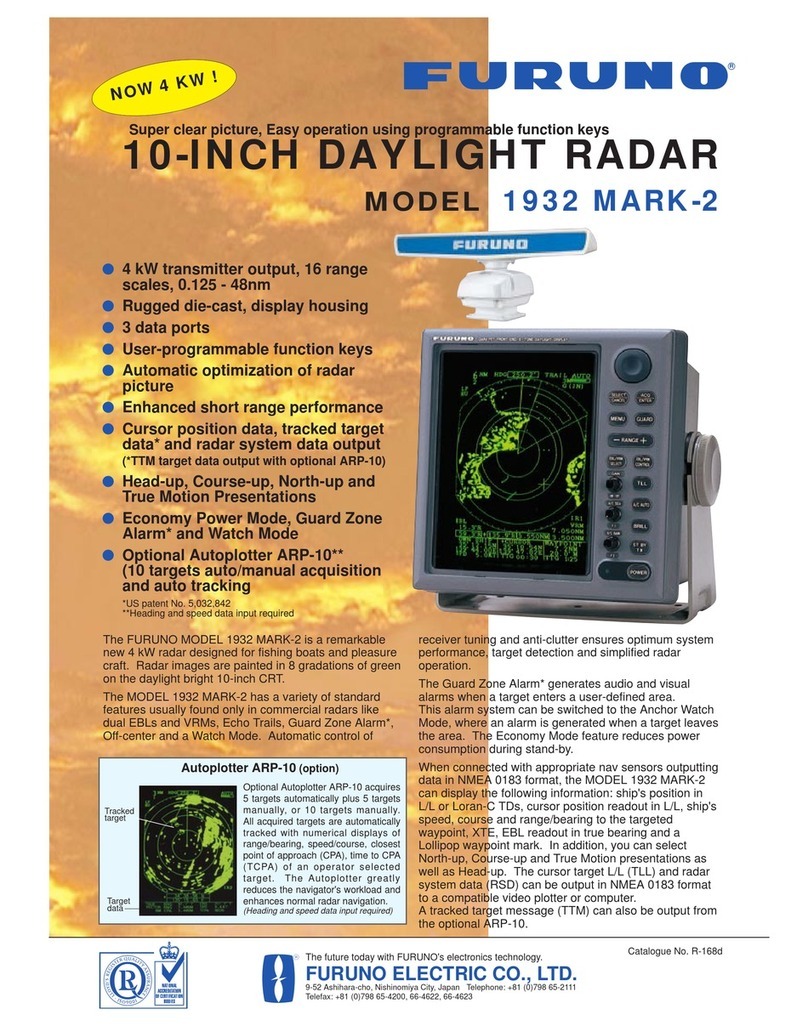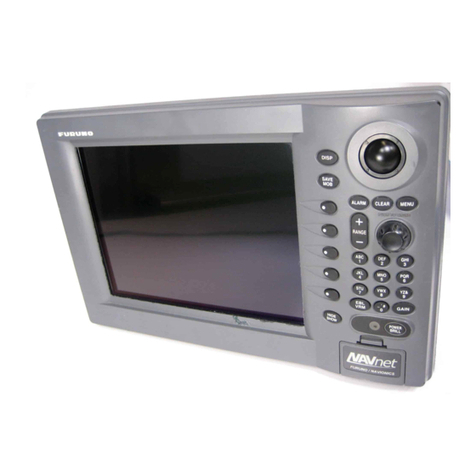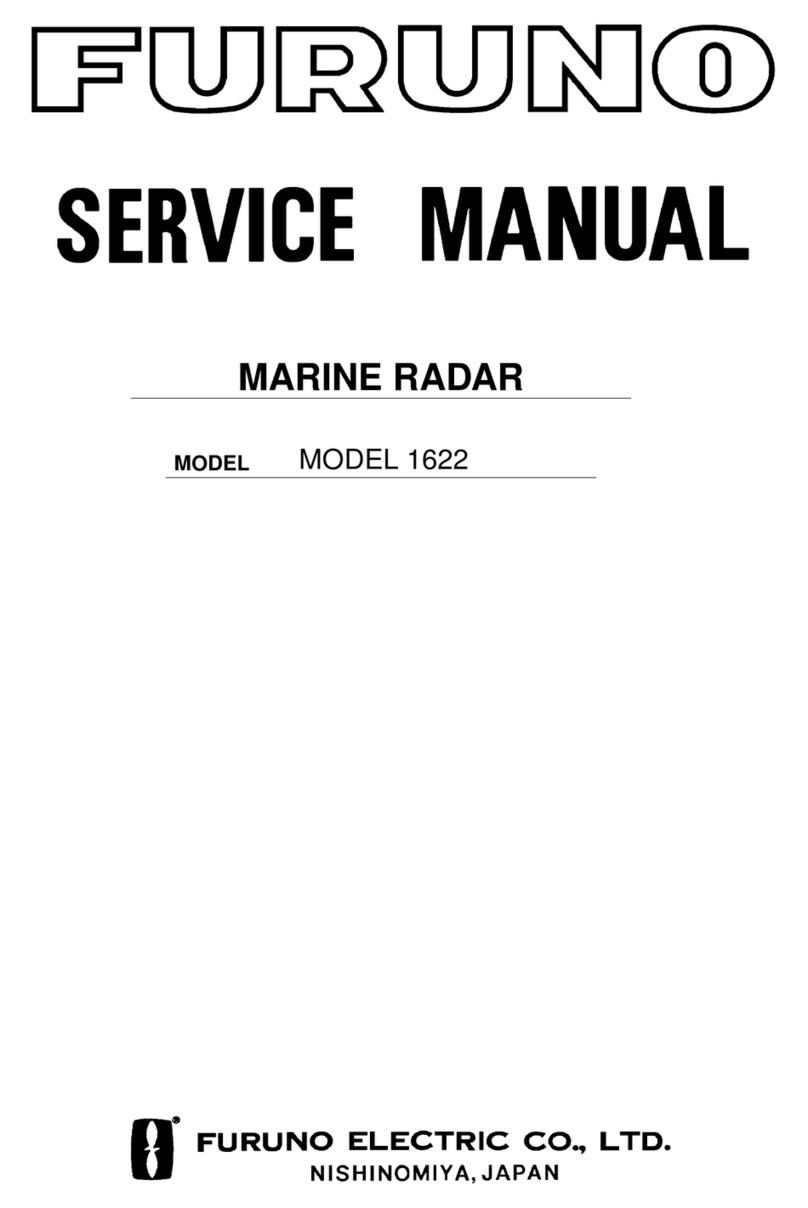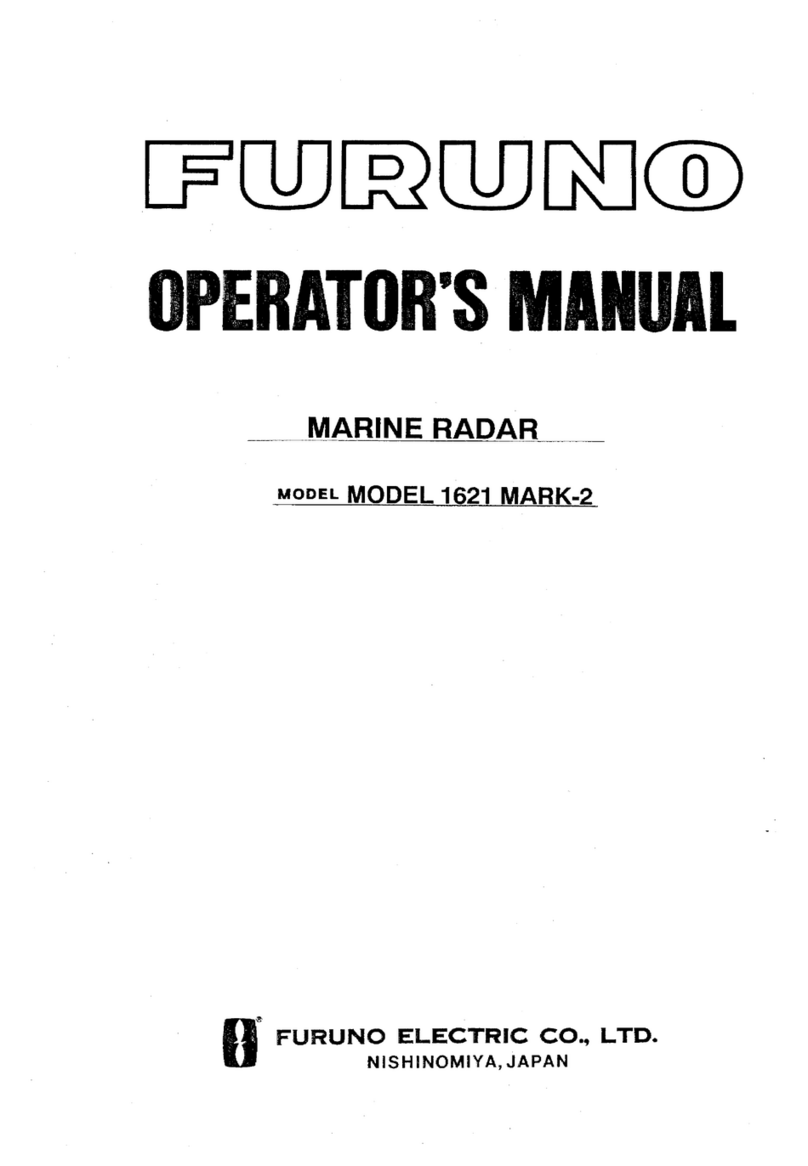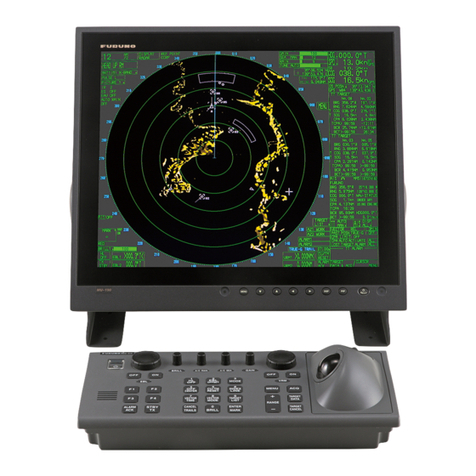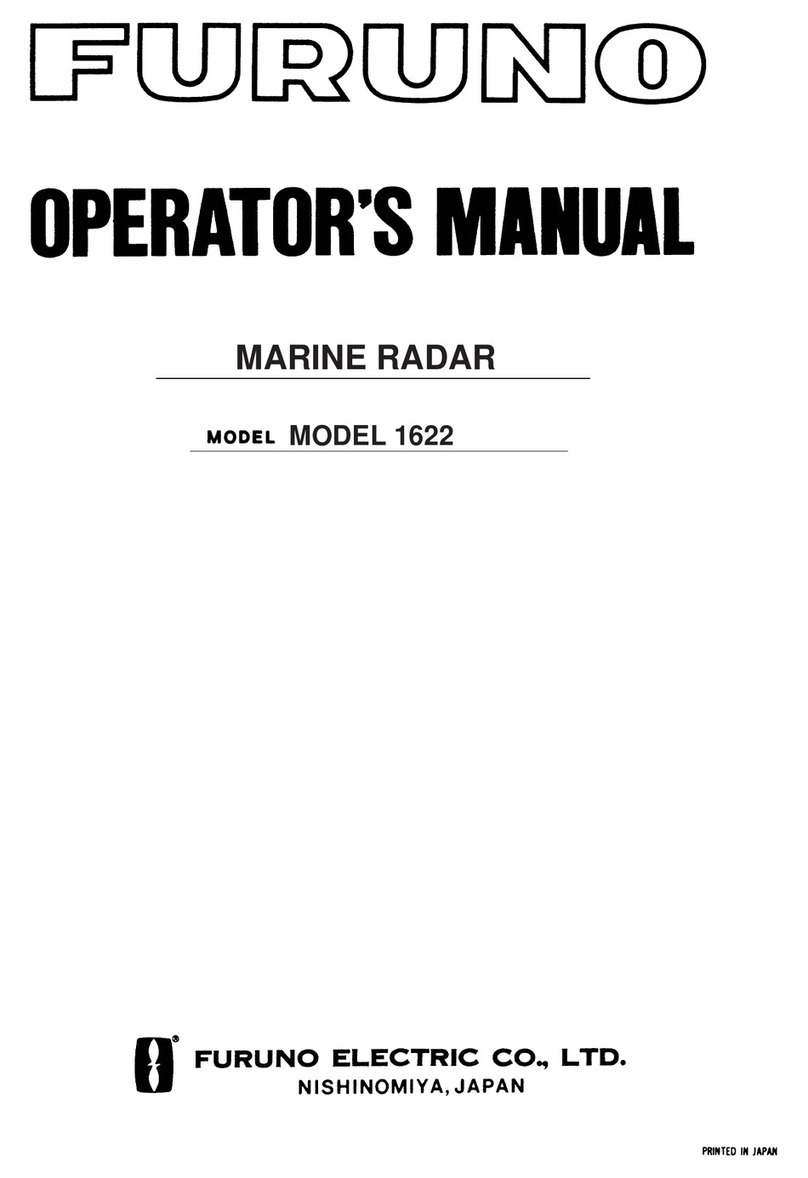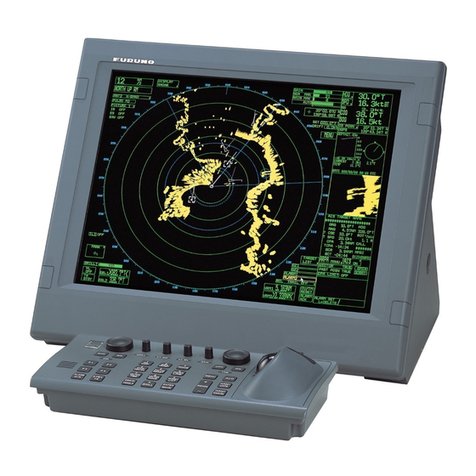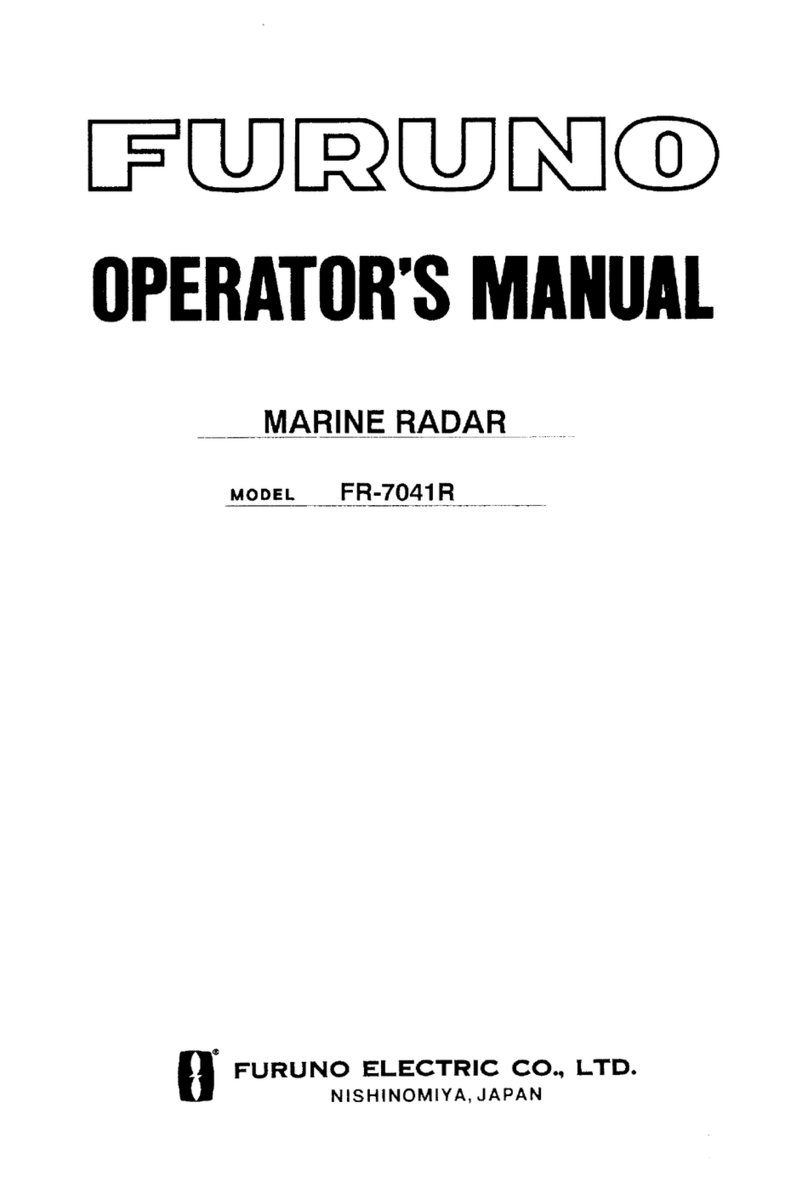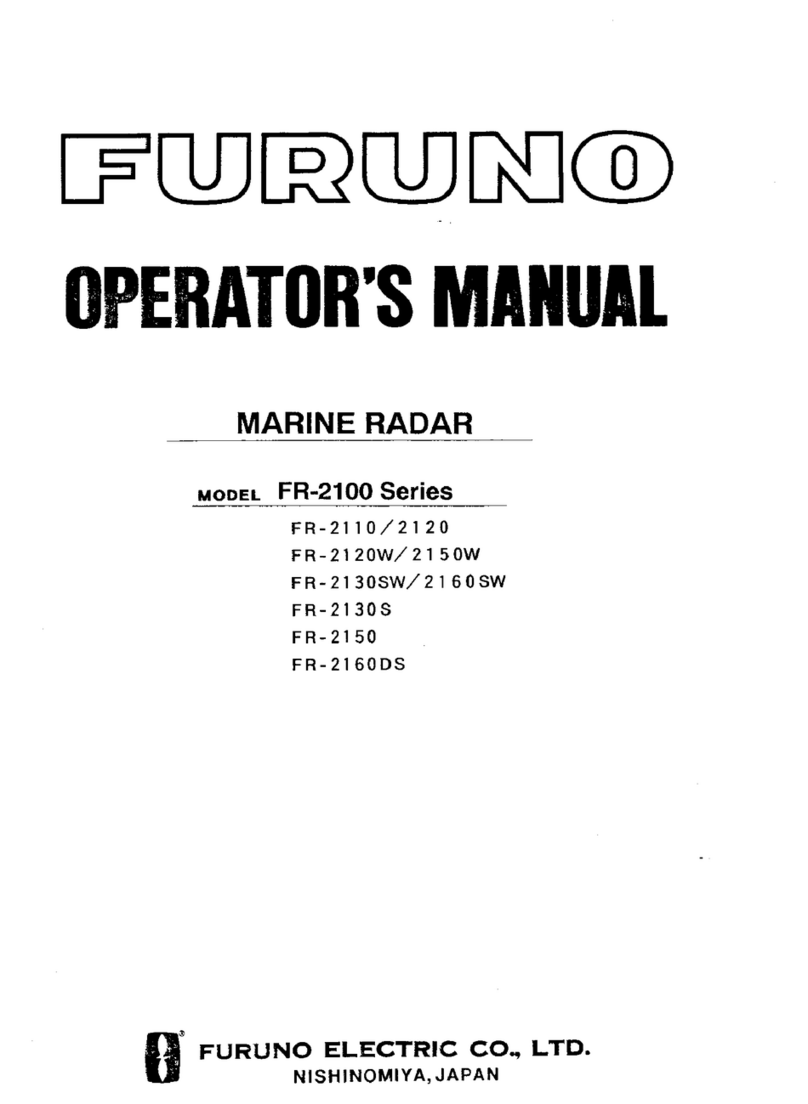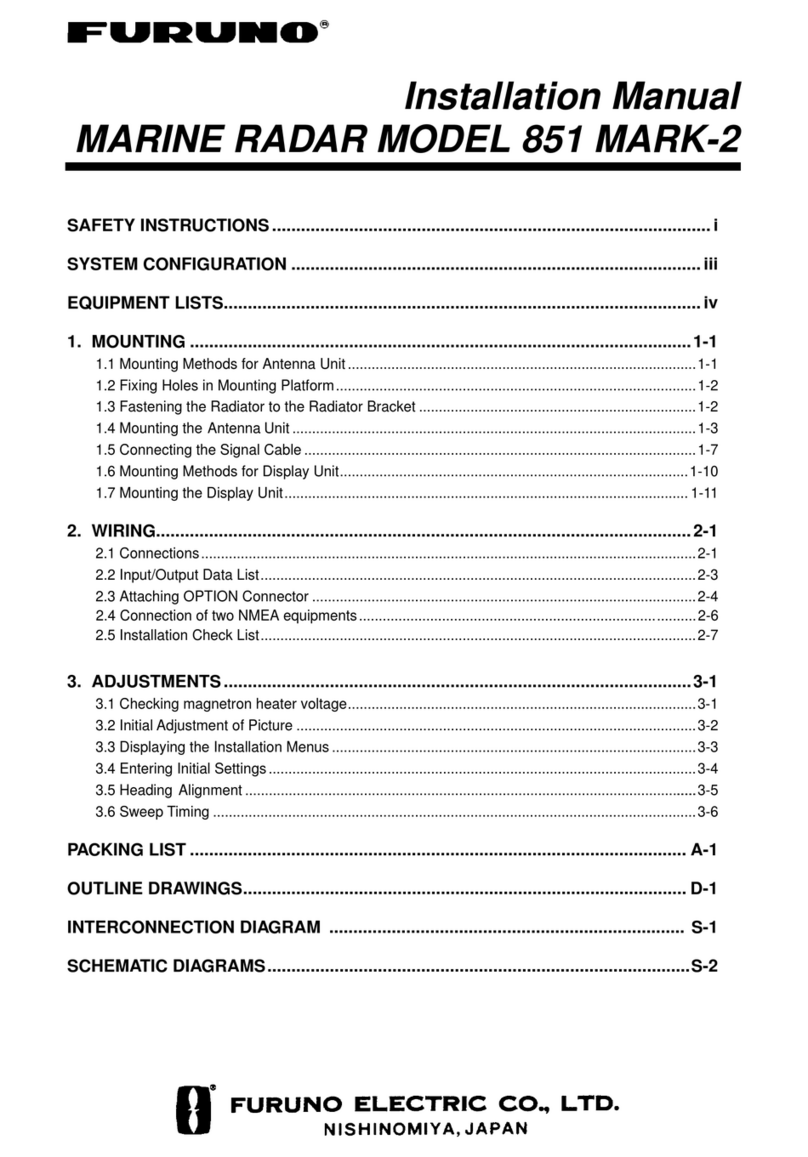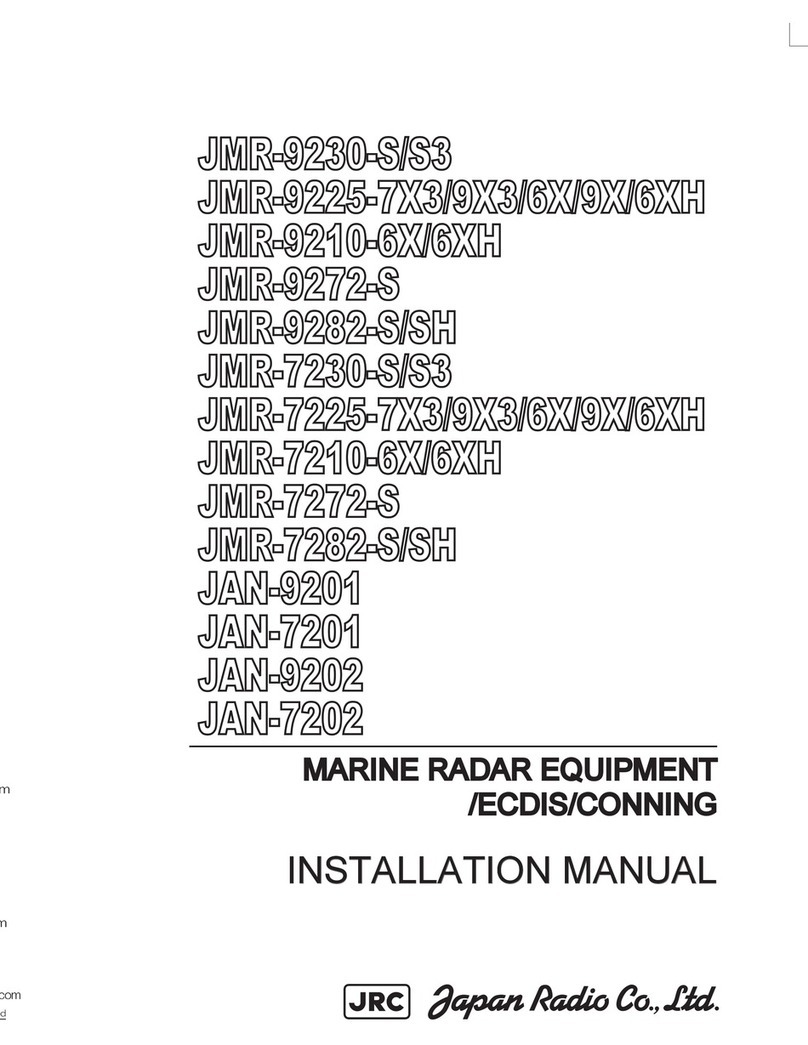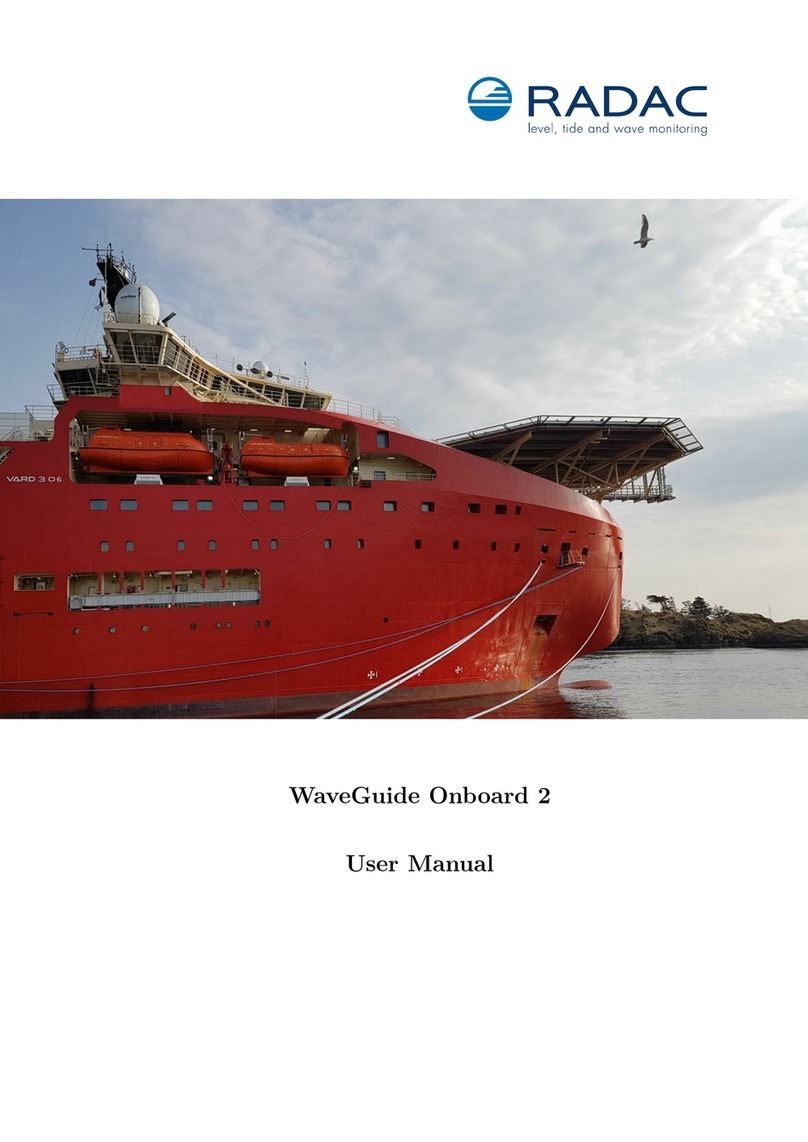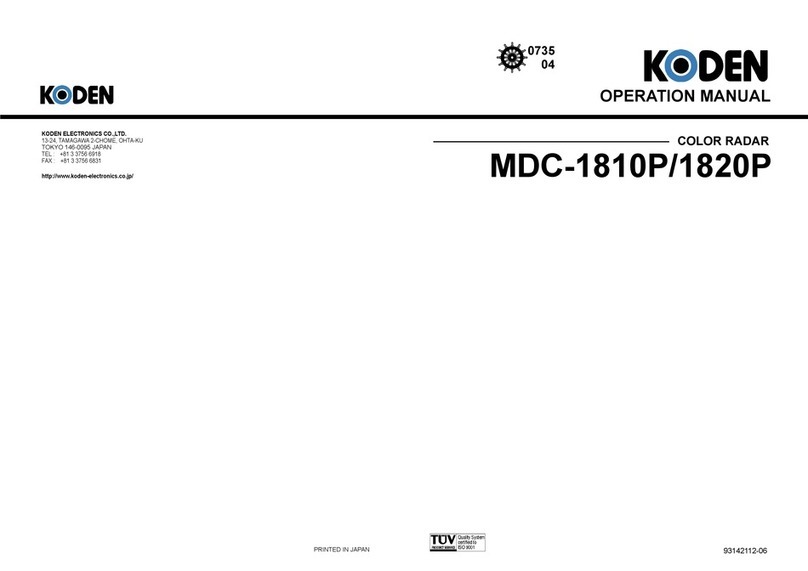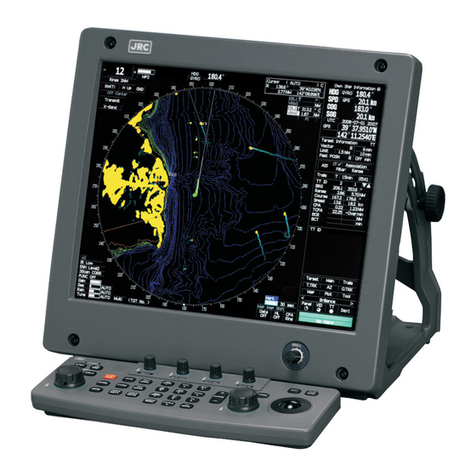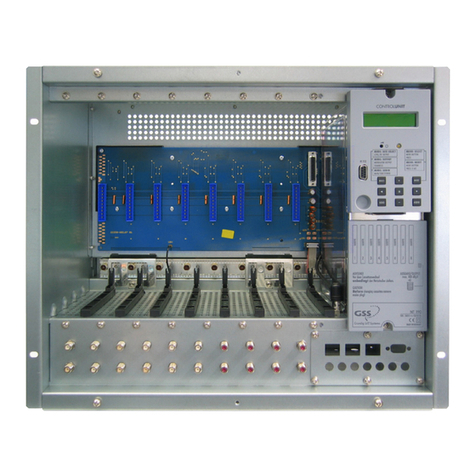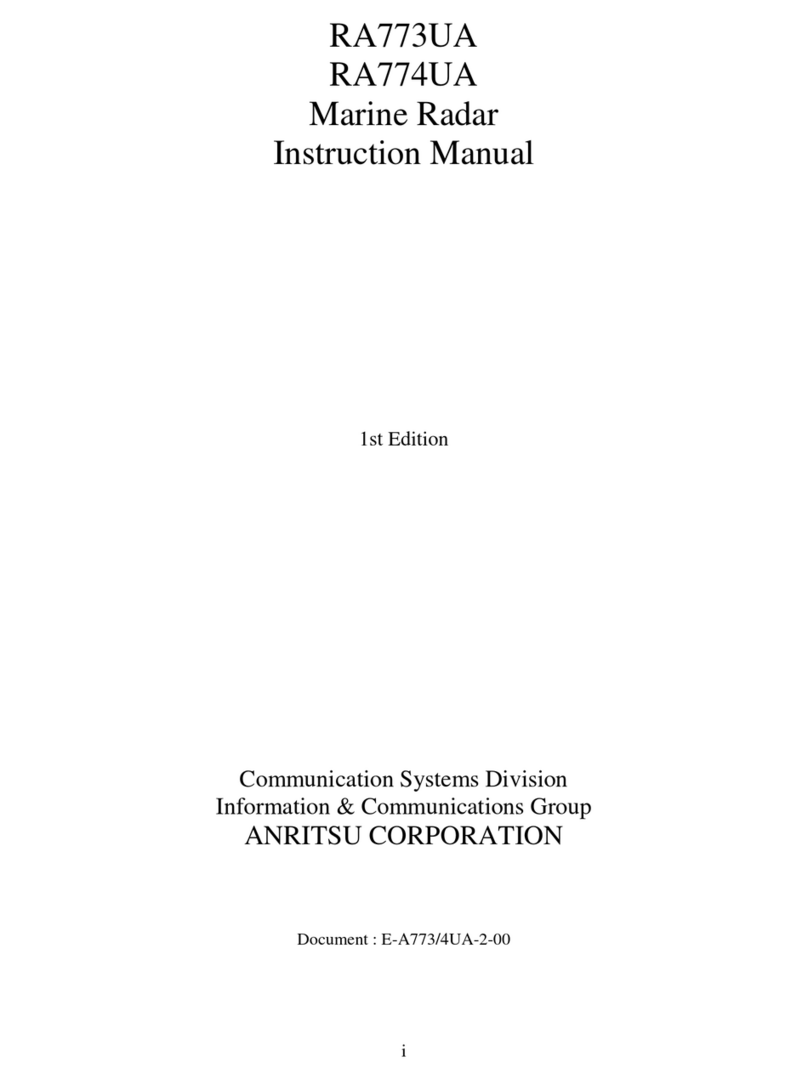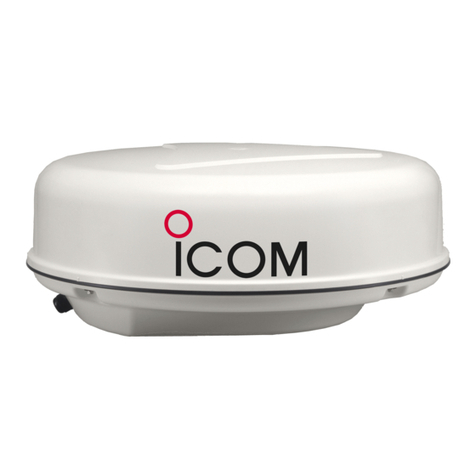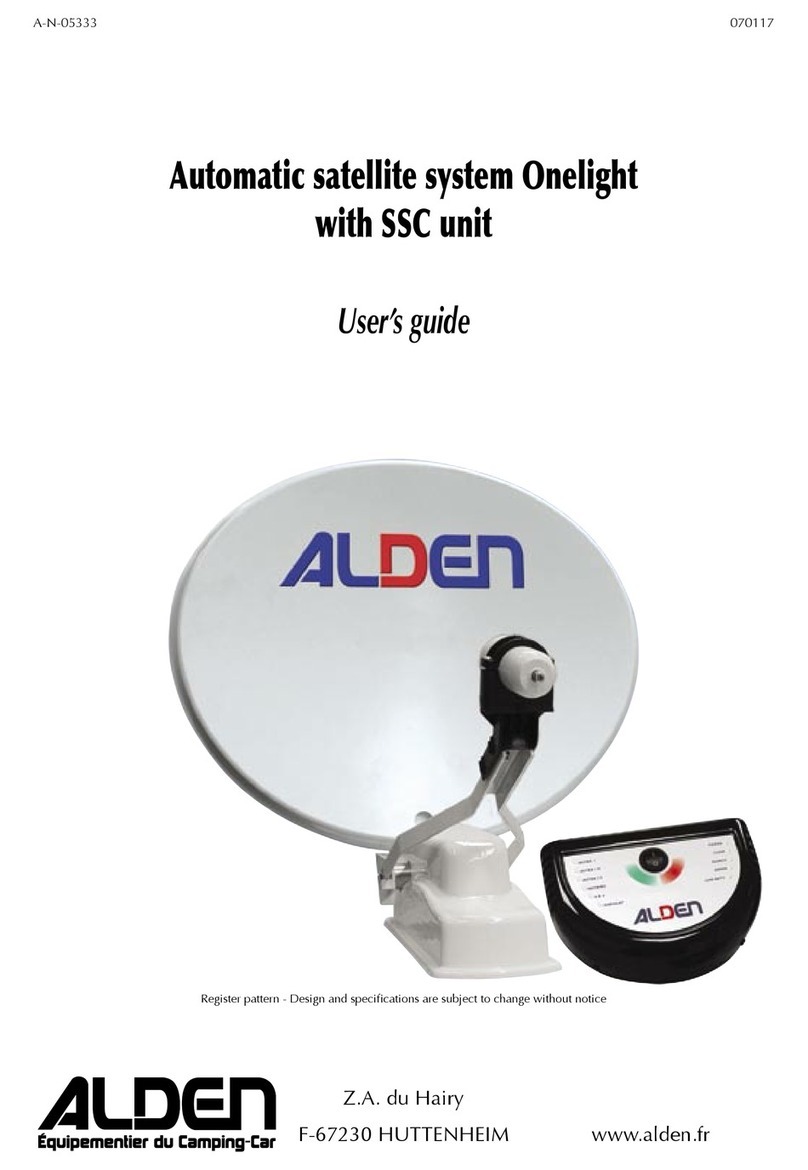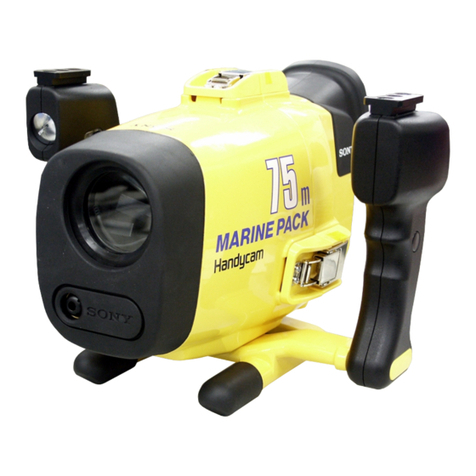
TABLE OF CONTENTS
vi
1.21 Measuring the Bearing...............................................................................................1-33
1.21.1 Measuring the bearing.....................................................................................1-33
1.21.2 Choosing true or relative bearing ....................................................................1-35
1.22 Collision Assessment by Offset EBL ..........................................................................1-36
1.22.1 How to assess risk of collision by the offset EBL ............................................1-36
1.22.2 Choosing point of reference for origin point of offset EBL ...............................1-37
1.23 Measuring Range and Bearing Between Two Targets ...............................................1-38
1.24 Setting a Target Alarm................................................................................................1-39
1.24.1 How to set a target alarm zone........................................................................1-39
1.24.2 Acknowledging the target alarm ......................................................................1-40
1.24.3 Deactivating a target alarm..............................................................................1-40
1.24.4 Target alarm attributes.....................................................................................1-41
1.25 Off-Centering the Display...........................................................................................1-42
1.26 Echo Stretch...............................................................................................................1-43
1.27 Echo Averaging ..........................................................................................................1-44
1.28 Target Trails................................................................................................................1-45
1.28.1 True or relative trails........................................................................................1-45
1.28.2 Trail time..........................................................................................................1-46
1.28.3 Trail gradation..................................................................................................1-46
1.28.4 Saving, copying target trails ............................................................................1-47
1.28.5 Trail level .........................................................................................................1-48
1.28.6 Narrow trails (B, C and W types).....................................................................1-48
1.28.7 Longer trails (B, C and W types) .....................................................................1-49
1.28.8 Removing trails from the display temporarily...................................................1-49
1.28.9 Erasing trails....................................................................................................1-49
1.29 Parallel Index Lines....................................................................................................1-50
1.29.1 Displaying, erasing parallel index lines............................................................1-50
1.29.2 Adjusting index line orientation, index line interval ..........................................1-51
1.29.3 Index line bearing reference............................................................................1-51
1.29.4 Choosing maximum number of index lines to display .....................................1-52
1.29.5 Index line mode ...............................................................................................1-52
1.30 Origin Mark.................................................................................................................1-53
1.30.1 Entering origin marks ......................................................................................1-53
1.30.2 Origin mark stabilization ..................................................................................1-55
1.30.3 Deleting individual origin marks.......................................................................1-55
1.31 Zoom..........................................................................................................................1-56
1.32 Markers ......................................................................................................................1-57
1.32.1 Heading marker and heading line ...................................................................1-57
1.32.2 Stern marker....................................................................................................1-57
1.32.3 North marker ...................................................................................................1-57
1.32.4 Own ship symbol .............................................................................................1-57
1.32.5 Barge marker...................................................................................................1-58
1.33 Automatic Picture Setup According to Navigation Purpose .......................................1-59
1.33.1 Choosing a picture setup option......................................................................1-61
1.33.2 Restoring default picture setup options ...........................................................1-61
1.33.3 User-programmable picture setups .................................................................1-62
1.34 Programming Function Keys......................................................................................1-64
1.34.1 Activating a function key..................................................................................1-64
1.34.2 Programming the functions keys .....................................................................1-64
1.35 Ship’s Position............................................................................................................1-69


